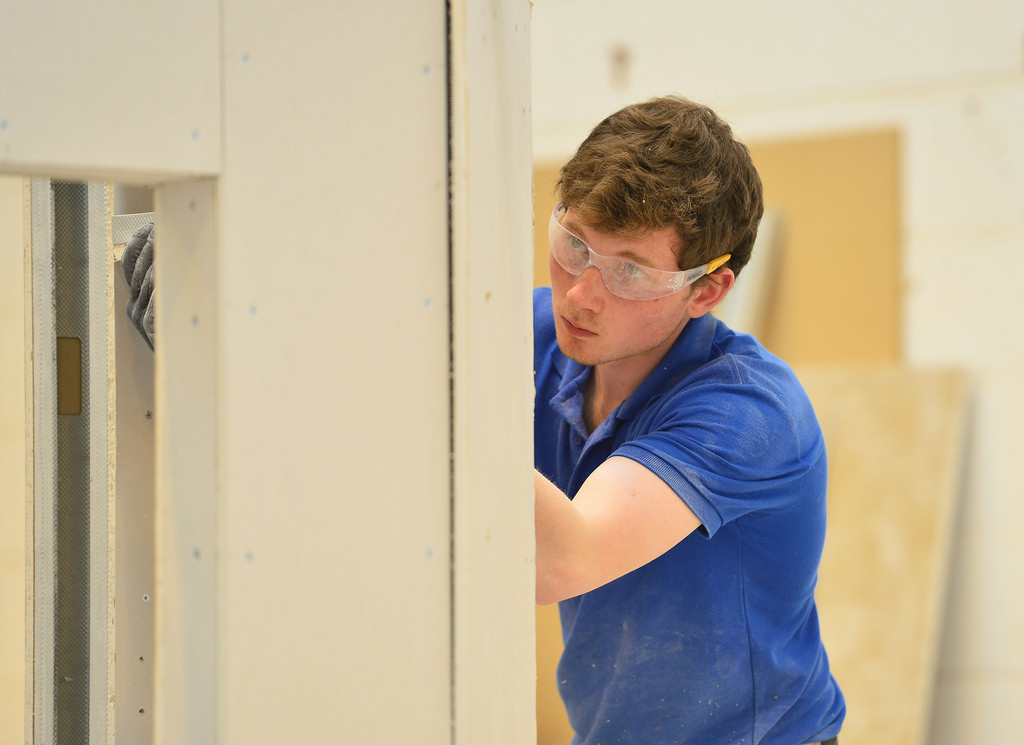When it comes to staying safe on the job, health and safety is not something you should ignore in any profession. Although it can sometimes seem time-consuming and even frustrating, the whole idea of this practice is to keep you and those working around you safe.
If you’re not convinced of its importance, it was widely reported that 507,000 workers suffered from work-related musculoskeletal disorders in 2016/17 – many of which were a direct result of inadequate health and safety practices. The Health and Safety Act 1974 regulations are regularly tweaked to improve worker safety and reduce this number as much as possible, but a small number of injuries are always going to occur.
Construction sites are a dangerous place so it pays to take your time and consider how you can stay safe when completing the task in hand. Thankfully plastering isn’t classed as one of the more risky jobs on site (compared to scaffolding for example), but there are still particular elements that require certain safety measures to be followed.
With that in mind, we’re going to take a look at some basic health and safety tips for plasterers.
Personal Protective Equipment (PPE)
All plasterers and Dryliners are required to protect themselves from hazards with specific protective equipment when working on site. This includes odour masks, shoes that are suitable for use on ladders and protective eyewear designed to block airborne particles and flying pieces of plaster.
Without these pieces of equipment, you run the risk of being injured by debris caused by plastering or falling from a height when applying plaster to a ceiling or wall. This leads nicely onto our next tip for health and safety.
Working At Height
Whenever you climb a ladder or work at height, stability is crucial in order to work safely and minimise risk. There are unfortunately a number of hazards directly linked to working at height and there will always be an inherent risk, but taking the required steps to ensure everything is as safe as possible can make a huge difference.
Make sure your ladder is in good condition and secured on a level, stable base before climbing. When working, don’t lean or overstretch yourself – come down off your ladder and reposition it to reduce the risk of falling.
Plasterers also generally have to use hazardous equipment such as heat strippers, drills and hammers to get the job done. With that in mind, having a stable base for your ladder or plastering stilts is even more important. If you can’t maintain your balance when working at height, you’re at risk of serious injury.
Working Alongside Other Tradespeople
Plastering is usually completed during the stages of a build where other tradespeople will still be carrying out their jobs around you – plumbers, tilers, carpenters etc for example. As you’ll be working in close proximity to others, it’s important to bear in mind their safety as well as your own.
In most instances, a cross trades risk assessment is required to ensure all workers can complete their jobs safely without impacting anyone else around them. Different tasks being completed mean different risks to those on site, so as there will be a bigger range of health and safety issues at play, it makes sense to understand all risks and work towards minimising them as much as possible.
General Health & Safety Guidance
All construction sites should undergo a full risk assessment as well as identifying who will be responsible for the safety and wellbeing of the workers during the build. This person should also be in a position to keep themselves up-to-date with new information regarding hazards or materials.
If you are involved in this on your site, here are some questions you should consider:
- Is the workplace well organised and efficient?
- Is the correct protective equipment available?
- Are the correct health and safety signs/notices being displayed?
- Are site visitors aware of the various health and safety risks?
- Is there a first aid resource?
- Who will report any and all health and safety breaches?
The CSCS Health, Safety & Environment Test
This is a minimum requirement for all plasterers regardless of whether you are a labourer, skilled worker or looking to move into a supervisory position on site.
The test is official recognition that you understand and meet the various health and safety standards that relate to your job. Alongside that, it’s also an indication that you remain up-to-date with the latest health and safety standards. To find out more about this test, visit the official CSCS site here.
Summary
Staying safe when plastering is straightforward if you’re able to correctly follow the appropriate regulations. Get yourself the right protective equipment, make sure you follow health and safety protocol when on site and you should be able to stay safe.
If you’d like to find out more about the minimum health and safety requirements for plasterers, visit the UK Government HSE site here for further details and example risk assessments.

